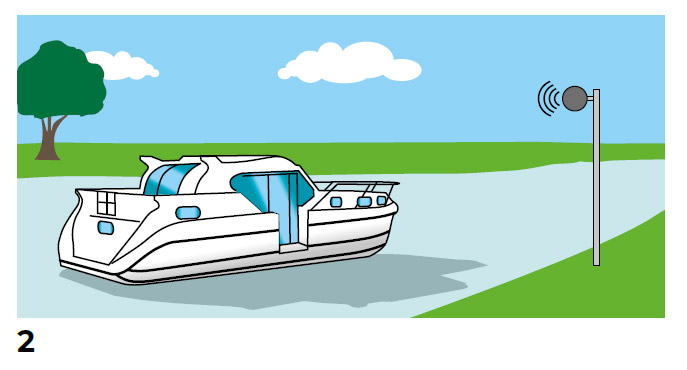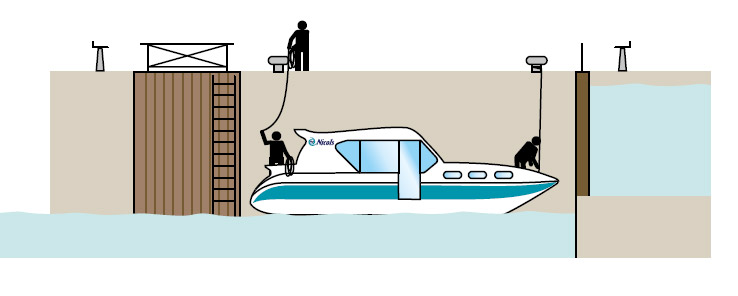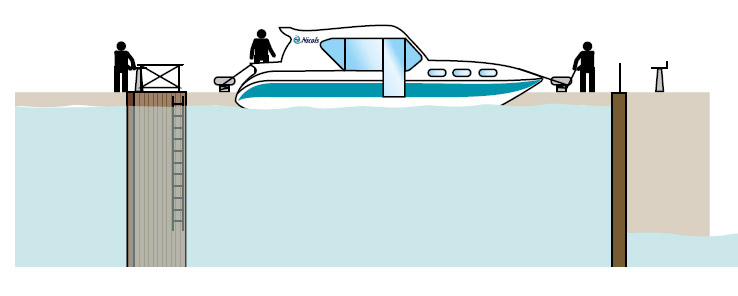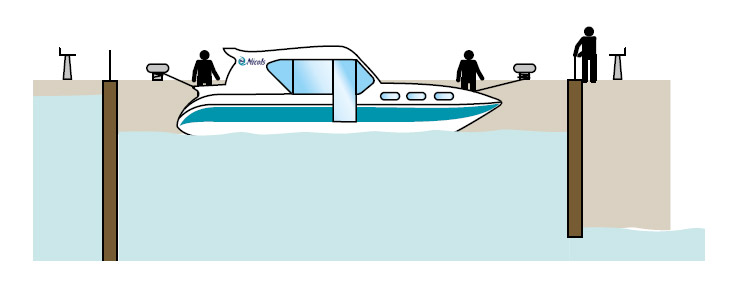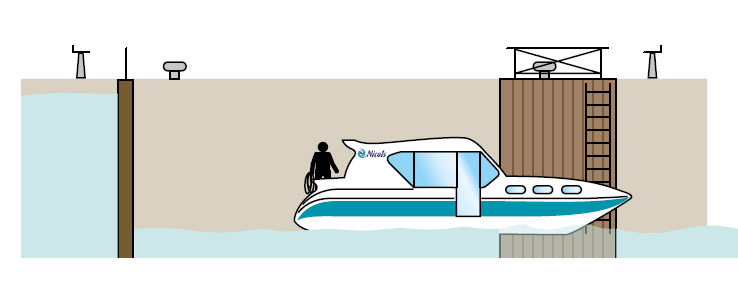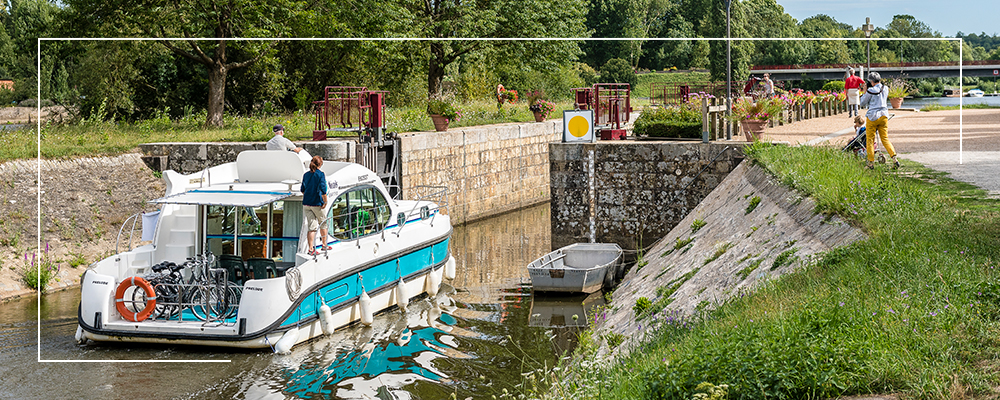
Passing through locks is a very simple and pleasant manoeuvre as long as you follow the advice you’ve been given.
The courtesy greeting to call to the lock-keeper on arrival is “Bonjour” and when you are ready to leave say goodbye with “Au Revoir” as you exit the lock. Please bear in mind though that, even though passage is made with the help of a lock-keeper, they will appreciate your help with the opening and closing of the lock-gates.
Always remember that commercial vessels have priority over pleasure boats in passing through locks.
Respect the timetables and working days of lock-keepers. Consult your waterways maps or ask Nicols for them.
At certain times of year (for example in a drought period) the lock-keeper will group several boats together before working the lock. Please be patient and understanding during these times!
There is no charge for passing through a lock however a tip or other gesture of gratitude would nevertheless be appreciated by the lock-keeper. Also there is no obligation on his part to help you to moor your boat.
Where the lock has a telephone the lock-keeper will warn the next lock-keeper of your arrival, so tell him if you intend to stop off between his lock and the next one so that the lock-keeper does not prepare the following lock for your arrival for nothing!
Before you get to a lock, at about 150-200 metres away, whether you are ascending or descending, slow down and warn of your arrival with one or two blows of the horn.
- If the gates are open on your arrival, you can go in straight away and moor.
- If there is a boat in the lock on your arrival wait until it has left before entering. To do this, moor your boat 100 metres from the lock in order not to obstruct the gates and to allow the boat leaving the lock room to manoeuvre safely.
Always remember:
- Manoeuvre slowly.
- Never jump from the lock onto the roof of a boat.
- Once you have passed through a lock, coil up your mooring ropes onto the boat.
Negotiating locks may seem complicated at first, but you’ll soon find that the more you go through the more familiar and quicker you and your crew become.
Depending on the region you are in, locks can be either manually operated, electrically operated or automatic…but the principle remains the same.
- Check that the water level has returned to normal on your side, if so, open the gates. If not, the lock chamber will need to be filled or emptied using the sluice gates.
- Before operating gates, make sure that sluice gates are firmly closed.
- When the gates are open, enter the lock slowly and moor up fore and aft.
- Open the sluice gates when the boat is properly secured. Open the lock gates only when the level has returned to normal, otherwise it will strain the opening mechanism.
- After leaving the lock, close the lock gates and lower the sluice gates.
These locks are always operated by a lock-keeper.
There is no lock-keeper to operate these locks.
They are automatic electric locks and operate in several different ways:
An automatic detector placed on the riverbank: pass the detector very slowly in order to allow it to detect your boat because these systems are designed to recognize the passage of big barges. (fig1)
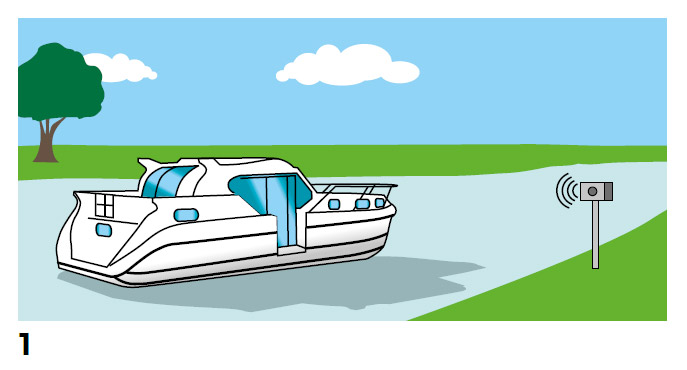
- A radar sensor fixed on the riverbank 2m above the ground. (fig 2)
- A pole placed on a suspended cable above a canal. (fig 3)
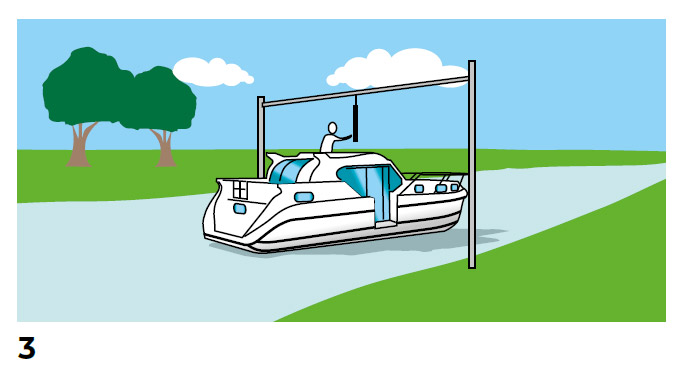
A remote control box which will have been given to you: use this to trigger the lock process when about 300m from the lock. Follow the instructions that will appear on the screen. (fig 4)
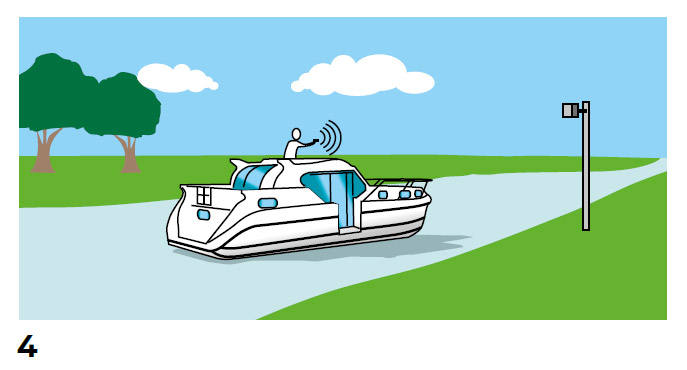
Carefully enter the lock when the signal is green (and the red signal is off). The light turns to red once the first boat enters. If there are several boats going through the lock together, the others can still go on.
When all the boats are moored, lift up the blue knob for 5 seconds. The gates close automatically and the cycle begins. In general, keep clear from the lock gates.
Check for the following and correct if required:
- If you are in a descending lock, the rear of the boat could be stuck on the sill.
- In an ascending lock, the bow could get stuck in the gate mechanism.
At the end of the cycle the gates open. Move out of the lock slowly so that you can be detected by the lock exit system. If there are several boats, leave in group to avoid closure of the automatic gates.
- In the case of emergency, the red lever allows you to stop the cycle.
- In case of breakdown, use the locks intercom phone placed on the platform of the lock to warn the service attendant.
In certain areas (Alsace, Doubs…), locks are organised in a series, which means that your passage of one of them automatically initiates the preparation of the following one. Once you are in a chain of locks, you should continue progress to the end or warn of your intentions to stop along the way using the intercom phone at the lock. Then you should also let them know when you intend to set off again.
The beginning and end of a chain of locks are indicated by the following symbols.
You arrive at the downstream gate (lower level) to ascend with the water to the upper level:
- The boat enters the lock gently, with 1 or 2 crew-members already having disembarked onto the bank.
Warning: The safety ladders found in locks should never be used by boaters unless required in an emergency. - Once in the lock moor your boat, first the front then the rear, by throwing the mooring ropes to the crew-members on land who should then loop them round the bollards without knotting them, before throwing the end back to the crew-members on board.
Downstream gates are closed by the lock-keeper with the help of a crew-member on land.
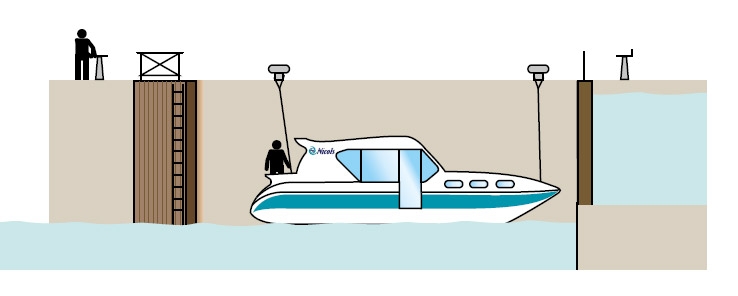
Upstream sluices are opened. The forward and aft ropes are held by the crew-members. Keep the boat against the wall.
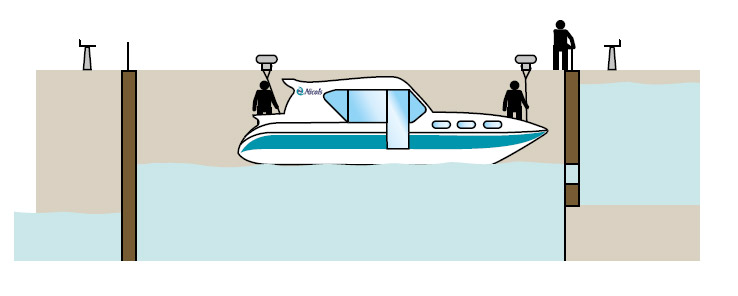
- While the lock fills, the wake means that the mooring ropes must be kept taut (so that the boat doesn’t move backwards and forwards). Tighten the mooring ropes as the boat rises.
- Gates are opened once the water levels are equal.
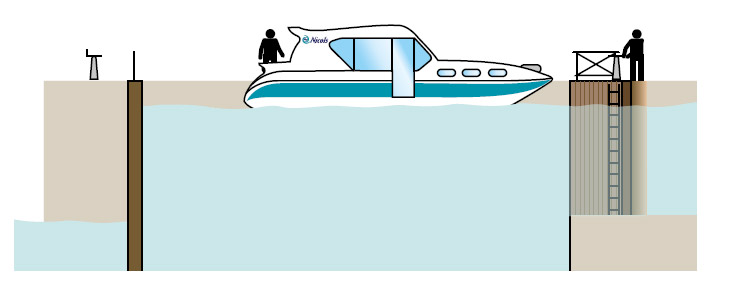
- Mooring ropes are unhitched and crew-members re-embark, the boat gently leaves the lock.
You come to the crown-gate to descend to the lower level:
- The boat gently enters the lock.
- The crew-member jumps onto the riverbank and loops the forward and aft mooring ropes around the bollards, without knotting them. He throws the ends back to the crew members on the boat, leaving enough slack for a descent of 3 to 4 metres.
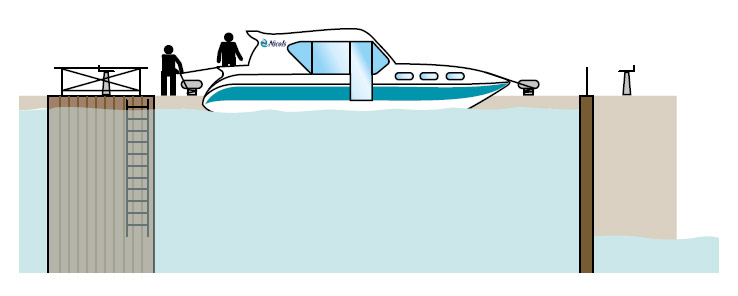
Negotiating locks may seem complicated at first, but you’ll soon find that the more you go through the more familiar and quicker you and your crew become.
